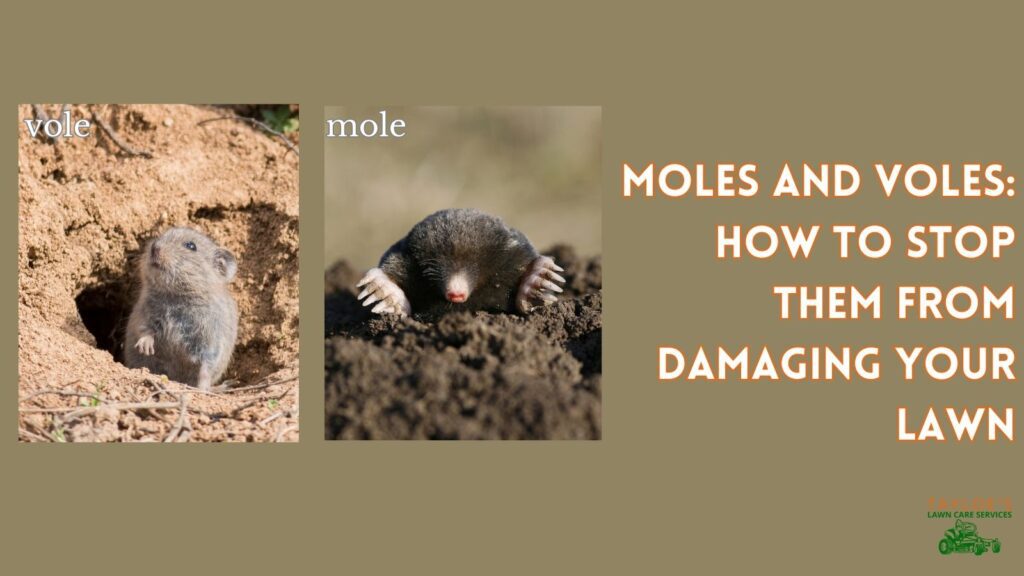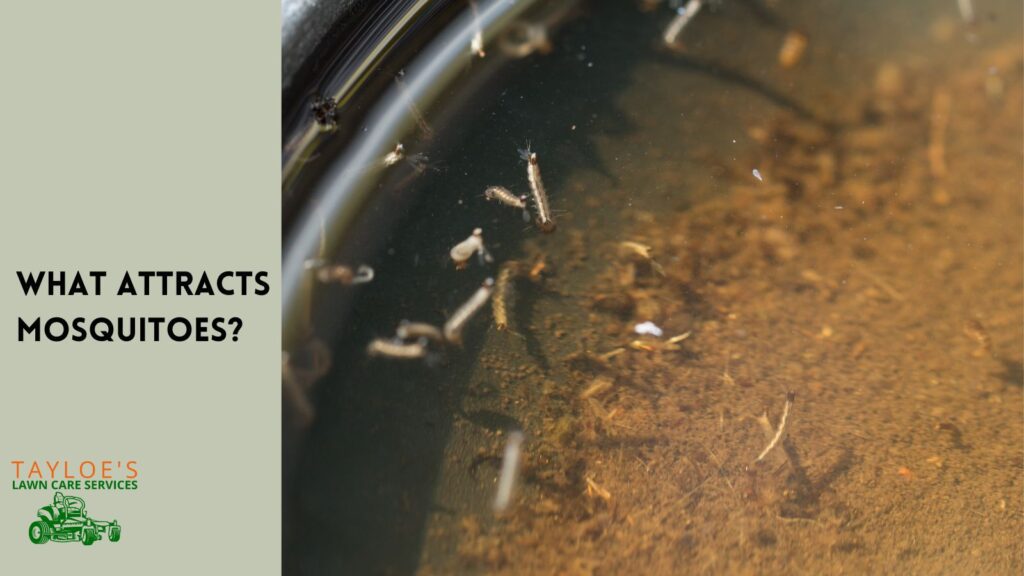Last Updated on: 3rd December 2023, 02:22 pm
These aggresive ants can diminish enjoyment of your yard.
Fire ant infestations are a common concern we hear about from customers. They seem pervasive here in Bertie County and the surrounding areas. These pesky insects not only damage your yard but can also pose risks to your family and pets.
This article will provide comprehensive information on managing fire ants and getting rid of them for good.
Understanding Fire Ants and Their Very Nasty Behavior
Fire ants are small, reddish-brown insects that build distinctive mounds in lawns and gardens. They are known for their aggressive behavior and painful stings, which can cause allergic reactions in some people. Fire ants can damage your lawn by building unsightly mounds and killing grass around their nests. They also hurt other organisms, as they can prey on beneficial insects and small animals.
Why do they attack in a swarm?
Fire ants swarm for two primary reasons:
- Defense mechanism: Fire ants will swarm to defend themselves and their territory when their colony or nest is disturbed. This aggressive behavior is intended to drive away or deter any potential threats. Perceived threats may include humans, animals, or even other insects.
- Protection of the colony: The colony’s survival depends on the health and safety of its members, especially the queen. Swarming allows fire ants to protect their queen and other vital colony members, such as the brood (eggs, larvae, and pupae), by quickly responding to and attacking any perceived danger.
How do they swarm?
When fire ants swarm, they exhibit the following behaviors:
- Rapidly climbing onto a perceived threat: Upon sensing a potential threat, fire ants will swiftly move from their nest or surrounding area onto the intruder. Their strong legs and agility enable them to rapidly climb and cover the perceived threat, such as a person’s foot or an animal’s limb.
- Coordinated group attack: Fire ants work together as a coordinated unit when swarming. Once they have climbed onto the threat, they will grip the victim’s skin with their mandibles (jaws) and use their stingers to inject venom. Fire ants can sting multiple times, and multiple ants often sting simultaneously, resulting in a painful and overwhelming experience for the victim. This coordinated attack is highly effective in deterring potential threats and protecting their colony.
This video shows what a swarm looks like–we also amplified the sound of the fire ant infestation so you can hear it.
What Do Fire Ants’ Stings Feel Like?
When a fire ant stings, the victim typically experiences the following sensations:
- Intense burning sensation: The venom injected by fire ants contains a mixture of toxic proteins and alkaloids, which cause an immediate and intense burning sensation at the site of the sting. This burning feeling is often described as similar to having one’s skin set on fire, hence the name “fire ant.”
- Sharp, localized pain: In addition to the burning sensation, fire ant stings can also cause sharp, localized pain. The pain is typically felt at the precise spot where the ant has stung and can be pretty intense, especially if multiple ants are stinging simultaneously. This combination of burning and sharp pain makes fire ant stings a highly unpleasant experience for the victim.
The healing time for fire ant bites can vary depending on the individual and the severity of the stings. Generally, a fire ant sting’s initial pain and burning sensation subside within an hour or two. The redness, itching, and discomfort may persist for several hours to a few days.
In most cases, the small, raised bumps or pustules that form at the sting sites will begin to heal within a few days and should disappear within seven to ten days. However, it’s essential to avoid scratching the affected area. That’s because scratching can prolong the healing process and increase the risk of infection.
If you notice any signs of infection or experience an allergic reaction to the stings, it’s essential to seek medical attention promptly.
NOTE: Tayloe’s Lawn Care Services does not make any medical claims. Nor do we dispense medical advice. This section is for informational purposes only. We are lawn care specialists–not physicians. We share our personal experiences, as we have disturbed many nests and suffered the consequences. Call a doctor if you have questions about fire ants or other insect bites or stings.
Identifying Fire Ant Infestations
To effectively manage fire ants, it’s crucial to familiarize yourself with their nesting habits and be able to identify their mounds. Fire ant mounds are typically dome-shaped, with a loose, granular soil structure. They can vary in size, but more giant mounds can be up to eighteen inches in diameter and sometimes even taller. These mounds are often found in open, sunny lawns, gardens, and fields.
It’s important to note that fire ant mounds usually do not have a central opening at the top. Instead, the ants use underground tunnels and multiple side entrances to access their nest. This feature distinguishes fire ant mounds from other ant species, often with a single, central entrance.
Signs of fire ant activity in your yard can be subtle or quite evident, depending on the extent of the infestation. Increased ant traffic around the mound and the surrounding area is a clear sign of an active fire ant colony. You might also notice visible damage to your lawn, such as dead or dying grass and other vegetation near the mounds and uneven ground caused by their tunneling activities.
In some cases, fire ants may also be attracted to particular objects or structures in your yard. They nest near electrical equipment, air conditioning units, or even pet food left outside. If you notice these signs of fire ant activity, you must take action promptly to prevent further damage to your property and protect your family and pets from potential stings.

Preventative Measures to Deter Fire Ants
Maintaining a healthy lawn is one of the best ways to deter fire ants. Proper mowing, fertilizing, and watering your lawn creates an environment less hospitable to fire ants. Here’s why:
- Healthy grass: A well-maintained lawn promotes dense and vigorous grass growth, making it more difficult for fire ants to establish their mounds. Thick grass also makes it harder for ants to access the soil surface and create tunnels.
- Soil conditions: Adequate watering and fertilization help maintain optimal soil conditions for healthy grass, but these conditions may not be as favorable for fire ants. For instance, fire ants prefer dry, sandy soil for building their mounds, so consistently moist soil from regular watering can discourage them from nesting in your lawn.
- Balanced ecosystem: A healthy lawn promotes a diverse and balanced ecosystem that includes various insects, microorganisms, and small animals. Many of these organisms are natural predators of fire ants or compete with them for resources. By fostering a thriving ecosystem in your lawn, you can indirectly help control fire ant populations.
- Stress resistance: A well-maintained lawn is more resistant to various forms of stress, including pest infestations. Keeping your grass healthy is better equipped to withstand the negative impacts of fire ant activity, such as damage to the root system and soil structure.
Regular inspections can also help you spot fire ant infestations early, making them easier to control. Limiting food sources by keeping your yard clean and debris-free can help discourage fire ants from residences.
Fire Ant Infestation Control Methods
There are several methods you can use to manage and eliminate fire ants. Here are some popular options:
- Natural methods: Pouring boiling water on fire ant mounds can kill ants and destroy their nests. Diatomaceous earth, a natural powder, can also be sprinkled around mounds to help control fire ants.
- Baiting: Fire ant baits are a popular choice for homeowners. These baits contain slow-acting insecticides that worker ants carry back to the colony, eventually killing the queen and other ants. Be sure to follow the label instructions for proper bait placement.
- Chemical control: Insecticides can be applied directly to fire ant mounds or as a broadcast treatment. Always follow the label instructions and take necessary safety precautions when using chemical control.
When to Seek Professional Help
If you have a severe infestation or are unsure how to manage fire ants effectively, it’s a good idea to seek help from a professional exterminator. You might also consider hiring lawn care pros to prevent future infestation. These pros have the expertise and tools to safely and effectively eliminate fire ants from your property.


The Takeaway: Deter and Treat Fire Ant Infestations Promptly–Reclaim Your Lawn
By understanding the insects, their behavior, and the damage they cause, you can take the necessary steps to manage and eliminate those fire ant infestations from your lawn. Remember, maintaining a healthy lawn and using the appropriate control methods are crucial for keeping these pests at bay. If you need help or have questions about fire ant control, don’t hesitate to contact Tayloe’s Lawn Care Services for expert advice and assistance.
Author Profile

- Randy Tayloe is the COO of Tayloe's Lawn Care Service, LLC. He is a certified custom applicator, recognized by the North Carolina Department of Agriculture Pesticide Division. A native of Bertie County, NC, and graduate of Bertie High School, he wants to beautify his home county - one yard at a time.
Latest entries
 FaunaOctober 3, 2025Fall decorations that endanger wildlife (and how to avoid the risks)
FaunaOctober 3, 2025Fall decorations that endanger wildlife (and how to avoid the risks) GardeningApril 1, 2025Fountain grasses add colorful foliage and movement
GardeningApril 1, 2025Fountain grasses add colorful foliage and movement GardeningMarch 21, 2025White cloud muhly grass growing guide
GardeningMarch 21, 2025White cloud muhly grass growing guide Lawn CareFebruary 25, 2025Should I mow every week?
Lawn CareFebruary 25, 2025Should I mow every week?






